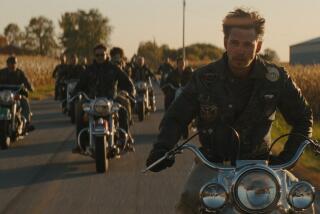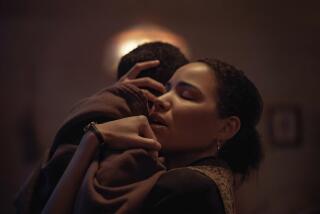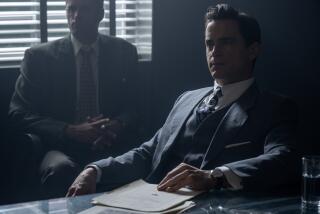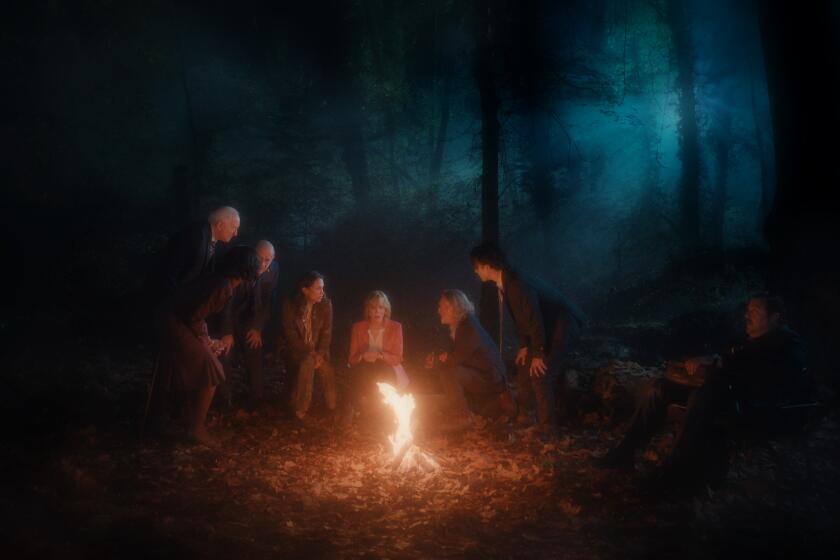MOVIE REVIEW : ‘Chicago’ a Flawed Look at the ‘60s
If you had to pick one year among the last several decades when it was most exciting to be young, it might be 1968: the year of McCarthy for President, the fall of L.B.J., the assassinations of King and Robert Kennedy, the Beatles’ White Album, Motown and “2001: A Space Odyssey”; of war, orgy and dreams of peace, in the summer after the Summer of Love.
That’s the milieu of the flawed but generous-spirited “Goin’ to Chicago” (at Laemmle’s Monica 4-Plex). Its focal point is Eugene McCarthy’s campaign. Its main characters are two ex-lovers, one of whom stays to Campaign Clean for Gene, while the other drops out to a fog of sex and drugs in Europe.
The clash is obvious.
Too obvious in fact. We guess, fairly early on, that the dropout, Aaron Lerner (Gary Kroeger) will receive his comeuppance, that girlfriend Eleanor (Eileen Seeley) and buddy Ed (Guy Killum) will be vindicated, while Aaron will be lucky if he doesn’t wind up with a venereal disease, terminal ennui or an overdose--or, worse than that, a decades-later coda as a minor character in “The Big Chill.”
But, if the younger characters in “Goin’ to Chicago” are a little too clean-edged and predictable, their elders (Cleavon Little and Viveca Lindfors as Ed’s father and Aaron’s grandmother) seem richer and fuller. There’s a reason. Writer-director Paul Leder, isn’t, as we might guess, a ‘60s veteran in his 40s, but a 65-year-old, with 17 other low-budget films under his belt, imagining what his children went through.
There’s an affectionate, tolerant stance toward youth here, that suggests a forgiving parent; I got fed up with Aaron a lot sooner than the movie does. And, though the youngsters’ scenes seem to waver between soap opera and elegant soft-core porn, their elders play with more warmth and urgency. Lindfors’ acting, mannered or not, has moments of radiance.
Leder, a much better director than writer, doesn’t plunge us into the hurly-burly of the times, doesn’t catch the immediacy, chaos and wild, irreverent humor of the late ‘60s. And this may be just as much a matter of temperament as budget.
“Goin’ to Chicago,” with its many period TV news clips, becomes, in a sense, a little reverie about experiencing crises from far away. It takes place on trim sunny lawns, in immaculate rooms, hospitals and pristine hotels, often with a radio or TV going in the background. And its dramatic high points usually involve displacement: like our views of Lindfors’ grandmother, trying to catch some fun and fury, or hanging on to a world fast dissolving around her.
For a $225,000 film, “Goin to Chicago” (Times-rated Mature for brief sex, nudity and drug use) is remarkably good-looking; cinematographer Francis Grumman gets a crisp, sleek gleam into every scene. The Best of Fest choice at the 1990 Santa Barbara Film Festival, it may be a crowd-pleaser as well.
And, if it isn’t to my taste, that’s probably a matter of temperament, too; my ‘60s perspective was always from the streets. In any case, like it or not, I can salute the picture’s heart-on-sleeve love of idealism and commitment, and the times when Lindfors or Little connect on screen.
‘Goin’ to Chicago’
Cleavon Little: Edward McGill Jr.
Viveca Lindfors: Helen Lerner
Gary Kroeger: Aaron Lerner
Eileen Seeley: Elinor Peabody
A Poor Robert production. Director/producer/screenplay/editor Paul Leder. Associate producer Vladek Juszkiewicz. Cinematographer Francis Grumman. Music Bob Summers. With Guy Killum, Dick Sargent. Running time: 1 hour, 33 minutes.
Times-rated Mature (brief nudity and sex).
More to Read
Only good movies
Get the Indie Focus newsletter, Mark Olsen's weekly guide to the world of cinema.
You may occasionally receive promotional content from the Los Angeles Times.










